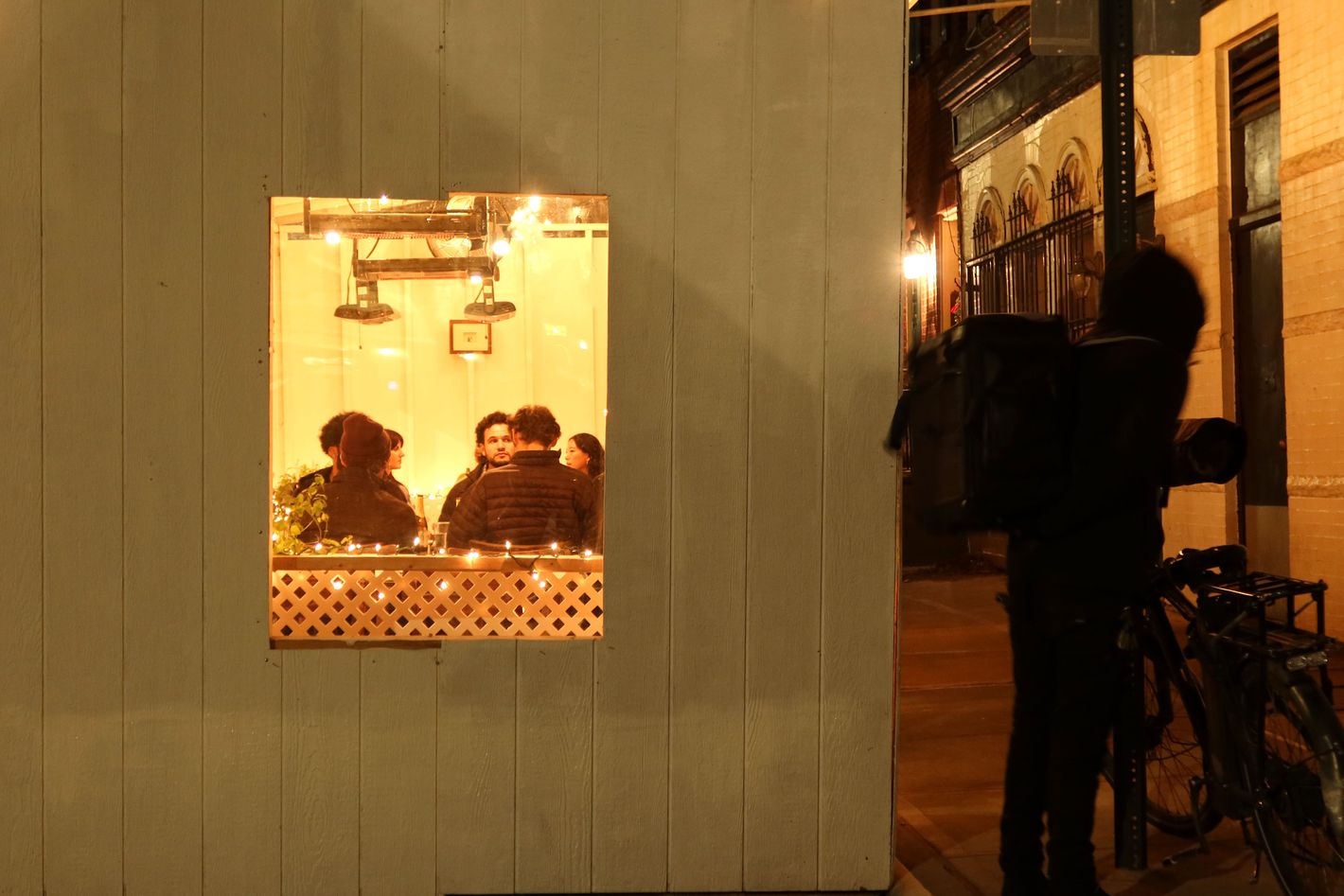when you want, where you want.
Outdoor Dining Isn’t Dead Yet
 Gary Hershorn/Getty Images
Gary Hershorn/Getty Images
In a few weeks, the last of New York’s pandemic-era streeteries will be taken down, as mandated by the city’s permanent outdoor-dining program. Some business owners are looking forward to this, despite what you may have read. Take Austin Johnson, who runs One White Street and Rigor Hill Market in Tribeca. Outdoor dining has been important to both of his businesses but especially Rigor Hill Market, where he says that 1,000 of his 1,400 daily customers sit outside. “As a business model, it only works with outside dining,” he says. On good nights, when there is enough demand to fill outdoor seating at One White Street, the restaurant’s capacity increases by 40 to 50 percent. Like many other restaurateurs, he applied for the city’s new outdoor-dining program. “It’s going to feel more like our sidewalk seating rather than, ‘Let me shove you in the barn that we built three and a half years ago,’” he says. “Our outdoor dining is getting upgraded with these new regulations. We’re getting rid of this house that all the neighbors are sick of looking at.”
The end of the temporary rules has caused plenty of hand-wringing, but if the city is actually trying to kill outdoor dining, as has been theorized, it’s doing a bad job. According to the Department of Transportation, 2,941 restaurants ended up applying for a total of 3,610 permits. (1,538 of those are for sidewalk cafes, 734 for just roadway setups, and 669 for both.) This is a lower figure, yes, than the total number of permits — 12,000 — that the city issued throughout the temporary program, but it’s significantly more than were issued before the pandemic, when sidewalk café permits peaked at 1,224 and were available in a more limited swath of the five boroughs.
On Tuesday, the New York Post reported on a New York Hospitality Alliance survey, writing that “over 44 percent” of the city’s restaurateurs said they are bailing on outdoor dining for reasons including a “byzantine permit process.” This could be called a slight exaggeration. The survey was of 447 restaurants — hardly a drop in the bucket of New York’s industry — 214 of which said they aren’t participating in the new program.
The Post’s story is the latest in a string documenting the supposed death of outdoor dining, which in fact will continue to be an option. Last month, the New York Times published an op-ed titled “The Death of Outdoor Dining Is a Blow to New York’s Vitality.” It followed a July story from Streetsblog, which reported that only 23 restaurants had public hearings conducted or scheduled for their applications. This was presented as evidence that outdoor dining was doomed, but those hearings are required only for curbside setups, and the city had already received hundreds of applications by then. Many restaurateurs were waiting it out for the August 3 deadline so they could keep their existing structures up as long as possible.
According to the New York Hospitality Alliance, 40 percent of the 214 respondents who aren’t continuing with outdoor dining shared that they wouldn’t have enough seating to make it worthwhile. Another 38 percent said that having to remove the structures annually would be too expensive; dismantling and storing the setups every winter will cost money that some don’t have. And there are other expenses, such as the expeditors and architects that restaurants are using to make sure their applicants get through. Other potential applicants may have been discouraged by language barriers, as the application is available only in English and Spanish.
But not every restaurateur in New York is up in arms about the changes, even if they think the application process could’ve been more equitable or easier for those without specialized knowledge.
At One White Street, Johnson says, the restaurant’s dining shed was typically a second option for customers. It would fill up less whenever the weather was nice enough for sidewalk seating. “I don’t feel like we’re losing anything,” he says. “I’m over the shed, because nobody wants to sit in the shed when it’s so beautiful outside.”
Related
All Rights Reserved. Copyright , Central Coast Communications, Inc.